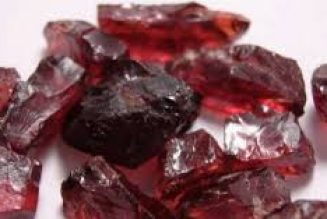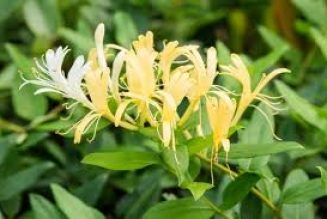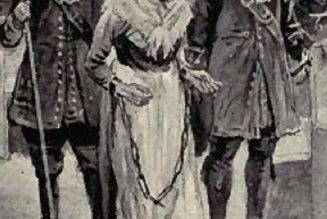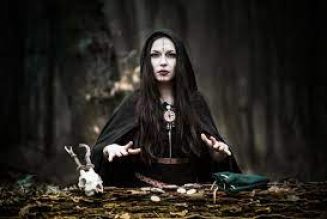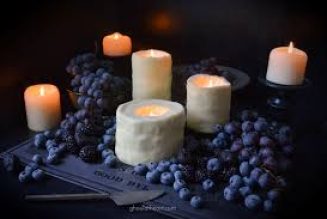How does herbal magick work, anyway?
A sachet of leaves tucked under a pillow, a handful of berries strewn across a doorway: Herbal charms and remedies are one of the most familiar forms of magick. Herbal (“green”) witches keep elaborate pantries of herbal ingredients, each with a different power to enlighten or heal, bother or protect. (To be clear, we’re talking about the ritual use of herbs here, rather than the medicinal and psychoactive effects they can have on the human body.)
But how, exactly, does herbal magick work? How does an unassuming pinch of bark or leaf become a partner in a magickal charm or spell? There are a number of theories—not all of them at odds with each other. Your own personal understanding of magical herbkalism may draw from more than one of the modalities discussed below. Or all of them!
Some magick workers prefer to simply follow traditional formulas and their own intuition, and not worry too much about the processes that bring results. But if you’ve ever had questions about the mechanics of herbal magick, here’s some different ways to look at it:
Modality #1: Rational-Materialist
The rational-materialist perspective is the skeptic’s view that “It’s all in your head.” Herbs and plants do not (or may not) have inherent magickal power. Their value to the magician comes from his or her belief in their power. Herbs (and all spell components, really) are like the athlete’s lucky undies or the Emperor’s fabulous new clothes—baseless but oddly critical.
So while you could theoretically substitute a pinch of dirt for Orris Root powder in that persuasion charm, doing so would make the spell decidedly less persuasive to you. Shaky confidence, as every qualified witch knows, means shaky results. Some herbal ingredients are expensive, hard to find, or dangerous, but that’s just too bad, if self-deception is in your recipe. The only option besides following a spell to the letter is coming up with a suitably (self-) convincing alternative.
Modality #2: Sensory-Psychological
Roses are red,
Chilis are hot,
Lavender soothing,
Asafoetida, not.
It’s obvious that each plant has its own color, texture, taste, and odor. According to the sensory model, these physical properties of plants arouse certain responses in the magician that then produce the magickal results. This theory is most relevant to herbs with evocative colors and scents (or strong traditional associations), but affects all herbal magick to some degree.
Of all our senses, smell in particular has the power to evoke deep memories and complex emotions. Scents tickle a magician’s awareness right where we love to be tickled, below the level of language and consciousness. (Sensory arousal combined with focused trance is one of the most basic recipes for magical success.)
The Sensory-Psychological model is very human-centric: Spearmint works in cleansing spells because it is invigorating to the magician, Jasmine in love spells because it inspires sensual thoughts. The magickal properties of a plant are not absolute, but dependent on your cultural and personal experience of the plant.
Modality #3: Correspondence-Energetic
Perhaps the most common theory these days considers herbs for their energetic properties and correspondences. This is a facet of the so-called “energy paradigm,” which has dominated Western magick for the last couple hundred years.
Ritual herbs (along with colors, perfumes, chants, stones, planetary hours etc.), are part of a family of magickal relationships between objects known as correspondences. Correspondence magick “stacks the odds” in favor of the magician by creating a favorable energetic environment for the outcome to manifest.
Each plant has a specific vibration, or energetic signature that is present when it is growing, and also remains after harvesting. Each has a character that is distinct and fairly consistent. The job of the Witch is to choose the most correct herb for the working, and the most correct method of using it, much as a painter chooses paints and then applies them.
Energetic theories differ from psychological theories because herbs are assumed to have a magickal vibration whether or not the magician is present. But not all magickal herbs are created equal. Their innate energies can be—to some degree—amplified, augmented or corrupted by the working. Purpose-grown, fresh-picked, or specially prepared herbs are assumed to be better for magickal uses.
Many herbal correspondences have their roots (heh) in a much older magickal paradigm, known as sympathetic magick. Sympathetic magic is based on the principle of resemblance. The use of stinging Nettle to keep away an enemy, or the fast-growing Dandelion to bring fortune and fertility are some centuries-old examples of sympathetic magic in herbalism.
Modality #4: Animist
The animist (or spiritist) view of magical herbalism sounds the most far-fetched to modern ears. But it is also probably closest to the way our ancestors used herbs, thousands of years before ritual magick was codified. Stories of dryads, devas, and flower fairies are remnants of this mode of magickal thinking.
The animist theory has a lot in common with energetic theories, in that each plant has a vibratory nature similar to others of its species. But it takes the idea one step further: Each plant has a consciousness, or sometimes a presiding spirit that must be placated or persuaded to lend its energy to the spell. It is not a tool, but a collaborator.
Gathering a bundle of hawthorn twigs means accepting both a gift from an individual tree and a boon from the greater spirit of Hawthorn. In animistic herbalism, the method of harvesting and using herbs for magick becomes very important indeed, because to offend the spirit is to compromise the working.
Which Theory is Correct?
Or, if that question can’t be answered, which is the most useful for the magician to adopt?
Here’s a fun thought experiment: Imagine a scary old building into which four people have just moved into separate apartments. Each is armed with a White Sage smudge wand, determined to make the place more habitable.
In the first apartment, there is a woman who has been given the smudge stick by a well-meaning friend, even though she doesn’t really go for “that stuff.” Perhaps feeling a little bit silly at first, she smudges the house. She calls to mind her friend’s good wishes, and her own joy at finally having a place of her own. She works actively on suspending her disbelief, knowing that her efforts will be more effective that way.
Next door, a Witch crumbles a few leaves of Sage in his hand. He rubs them between his thumb and forefingers to extract their pungent oils. Inhaling deeply, he savors the familiar, soothing smell and allows it to spread to every limb of his body. As he moves through the room with the lit smudge, he feels a calming, cleansing vapor trailing behind him.
In the third apartment, a ceremonial magician is waiting for the appropriate planetary hour to perform her cleansing. Beginning in the East, she smudges the room, confident that the plant’s vibration is in harmony with her own Will.
And in the final room, of course, a shaman is doing a reverent invocation of the Sage spirit. He thanks Her for Her sacrifice, and welcomes her participation in his rite.
Putting It All Together
In this extreme example, four people are doing four (arguably very effective) forms of herbal magick. But for most of us, our style of working blends fluidly across all these categories.
As thinking Witches, we can’t ignore either our intellectual or our magical heritage. Rational, energetic and psychological theories have shaped our magickal philosophies so much that it is impossible to fully expunge them, even if we wanted to. It’s equally difficult to shake the gut-level conviction that a growing plant has a life force and magickal power not too different from our own.
Knowing why and how magick works should be eye-opening, not limiting. Let us all blend logic, sensuality, knowledge, and intuition as we learn and grow in our craft.










































